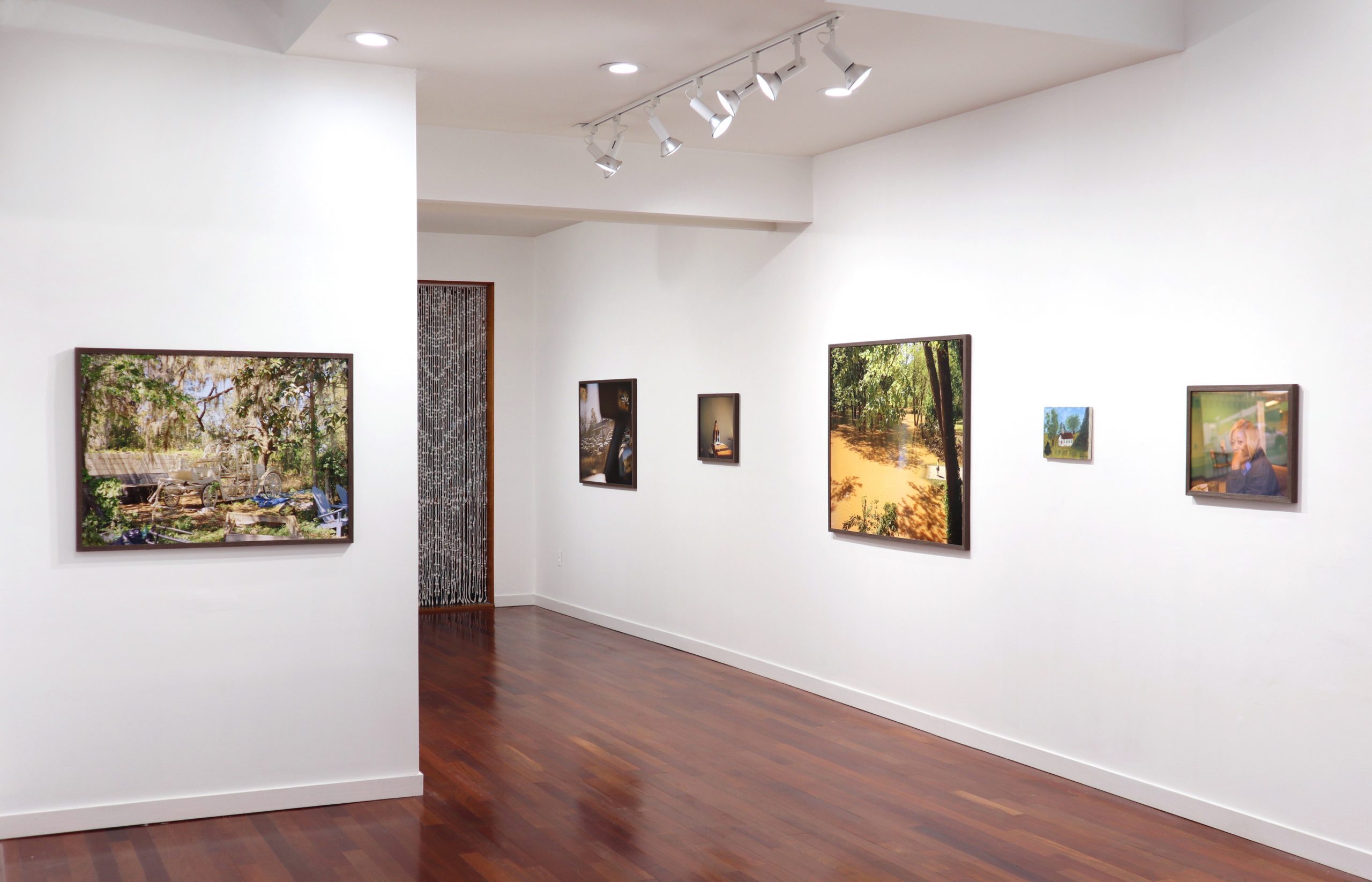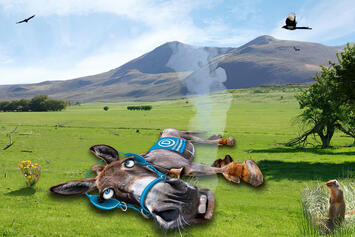Located in a renovated townhouse in the Bolton Hill neighborhood of Baltimore, Maryland, CPM Gallery has become a recognized cornerstone of the city’s vibrant and growing art scene. Under the direction of Vlad Smolkin, CPM (the acronym stands for Critical Path Method) has forged its own path that doesn’t quite adhere to the traditional gallery models of major art centers like New York or small regional locations. Rather, CPM’s program could be described as integrated, as it promotes and supports artists and critical discourses on both the micro and macro levels—recognizing the value of leveraging the local community as well as engaging with the larger, international art world.
We caught up with Smolkin to learn more about his and the gallery’s background and what’s in the pipeline for CPM.
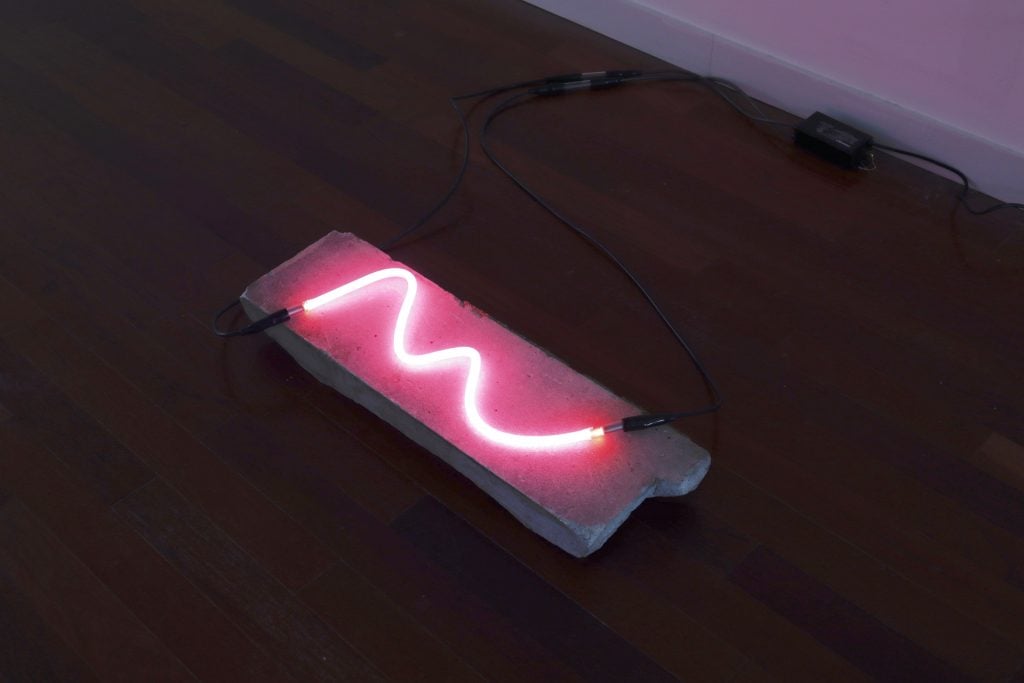
Esther Klaes, BAL / Marble step (2024). Courtesy of CPM Gallery, Baltimore.
What prompted you to establish CPM Gallery in Baltimore in 2020 after working in the art world in New York for 10 years, most recently as director of Peter Blum Gallery? Can you tell us a little about what led to this decision?
I grew up in Baltimore and felt like I wanted to reconnect with the city, support the art scene and be closer to my family. Baltimore is slower paced than New York and that suits my style of working with artists and doing exhibitions. We have a guest suite above the gallery where artists from around the country and the world can stay and spend more time engaging with the place and the city. My idea was to give the artists more time, which would hopefully lead to less compromise and more site specificity. Currently, German artist Esther Kläs is staying here to prepare our upcoming exhibition, which opens September 6th.
What would you like to tell people about the art scene in Baltimore?
Baltimore has a lot of great artists and is going through something of a renaissance in terms of the work produced here. One goal of the gallery is to give some of these artists a platform and place them in the larger art world. The collector base is growing here and there are great institutions – the Baltimore Museum of Art has a group of fantastic curators. It’s important to note that Baltimore is a predominantly black city and sits on the Mason-Dixon Line, which historically divided the North and the South. Part of the goal of my program is to delve into the complicated and fascinating history of this city.
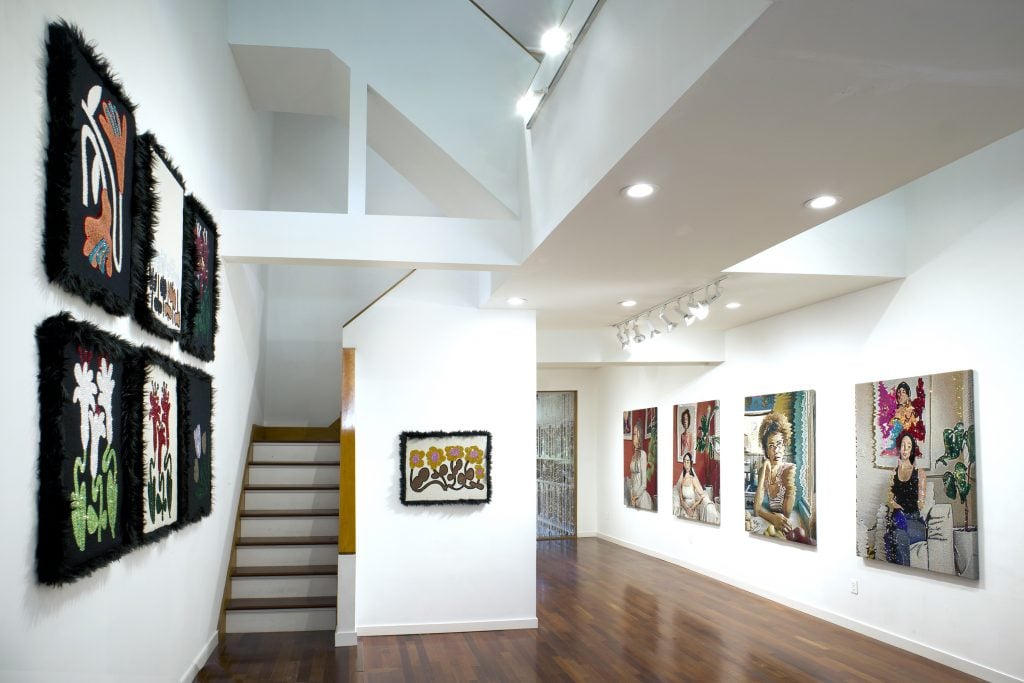
Installation view of “Akea Brionne: Janus” (2023). Courtesy of CPM Gallery, Baltimore.
You’ve described how you view galleries in a more “decentralized” way. Can you elaborate on that? How is that reflected in the ethos of the gallery itself?
I wanted to open a gallery outside of a major art center that could participate both locally and in the larger critical conversations about art and galleries internationally. The art centers attract talent from smaller places because they give them a viable way to sustain themselves. I believe that keeping some of the creative energy of artists in the places where these ideas originate is a good thing, and the only way to do that is to make it make sense for them financially and critically.
Recently I had a solo show with the amazing young artist Akea Brionne, who shows her work all over the country but has her roots in Baltimore. And this fall there will be a show with Devin Morris, who also grew up in Baltimore and recently participated in the artist-in-residence program at the Studio Museum in Harlem in New York. I also invite curators from outside to do shows in the gallery. The last show was curated by art critic Seph Rodney and featured work by Chakaia Booker, Leonardo Drew, and Trenton Doyle Hancock.
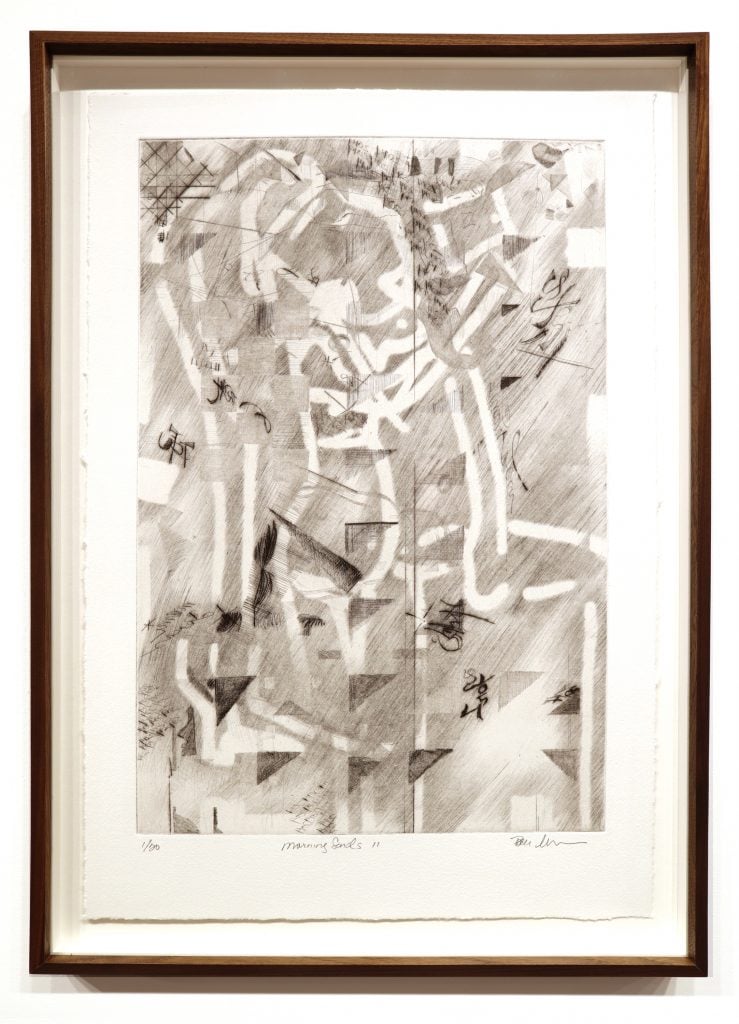
Pooneh Maghazehe, Morning Sand II (2021), CPM Editions. Courtesy of CPM Gallery, Baltimore.
Can you tell us more about CPM Editions? What do you look for in this type of collaboration with artists?
Publishing editions has been a goal from the beginning. I approach artists with ideas for editions that challenge them to look at their work from a new perspective. My first edition was a sequence of four drypoints by Iranian-American artist Pooneh Maghazehe, a sculptor who often works with reproduction. She had never made prints before, and the edition was a way for her to think about diversity in a different way. Last year I did an edition with Ukrainian-born artist Luba Drozd, who makes site-specific sound and light installations. For the edition, we made 12 suitcases that contained the components and instructions for creating sounds that exist as both sculptures and sound installations.
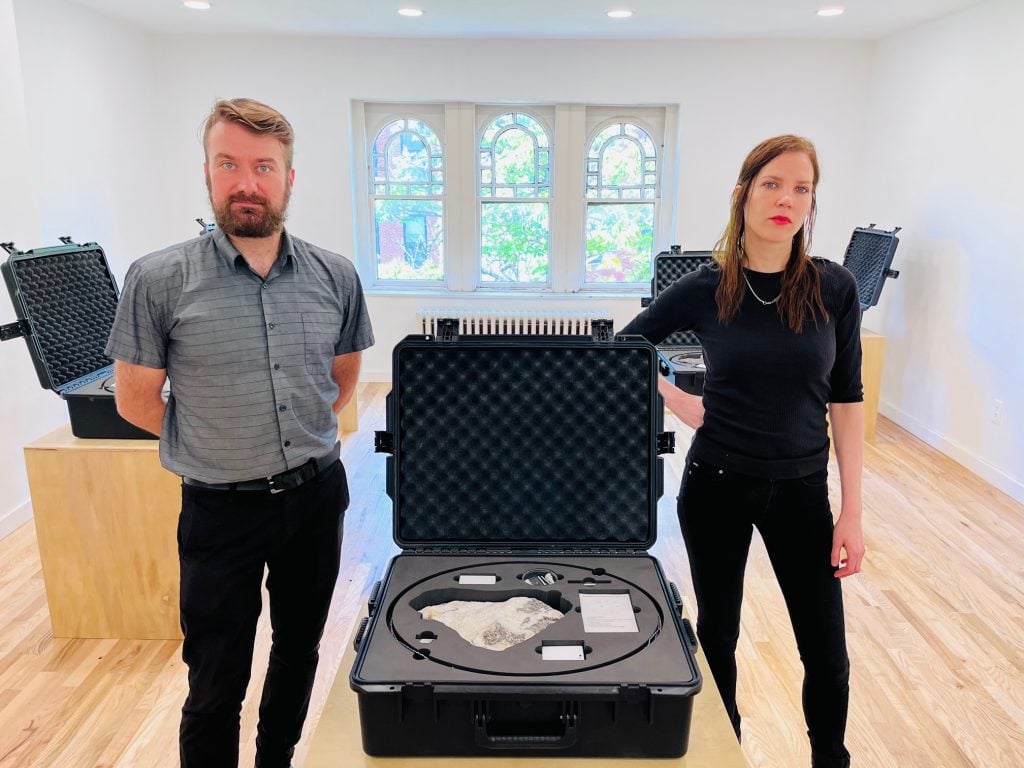
CPM Gallery Director Vlad Smokin (left) with artist Luba Droz (right) with Franconia Notch (2023), CPM Edition. Courtesy of CPM Gallery, Baltimore.
Looking to the future, are there any exhibitions planned that you can tell us about?
My upcoming fall exhibitions illustrate the breadth of my program. On September 6, I will be opening a solo show with Kläs and in November a solo show with Baltimore-born artist Devin Morris. Both artists are working with CPM Gallery and have a keen sense of what it means to have their work seen in this slower way in Baltimore—and I’m excited to see what they make of it!
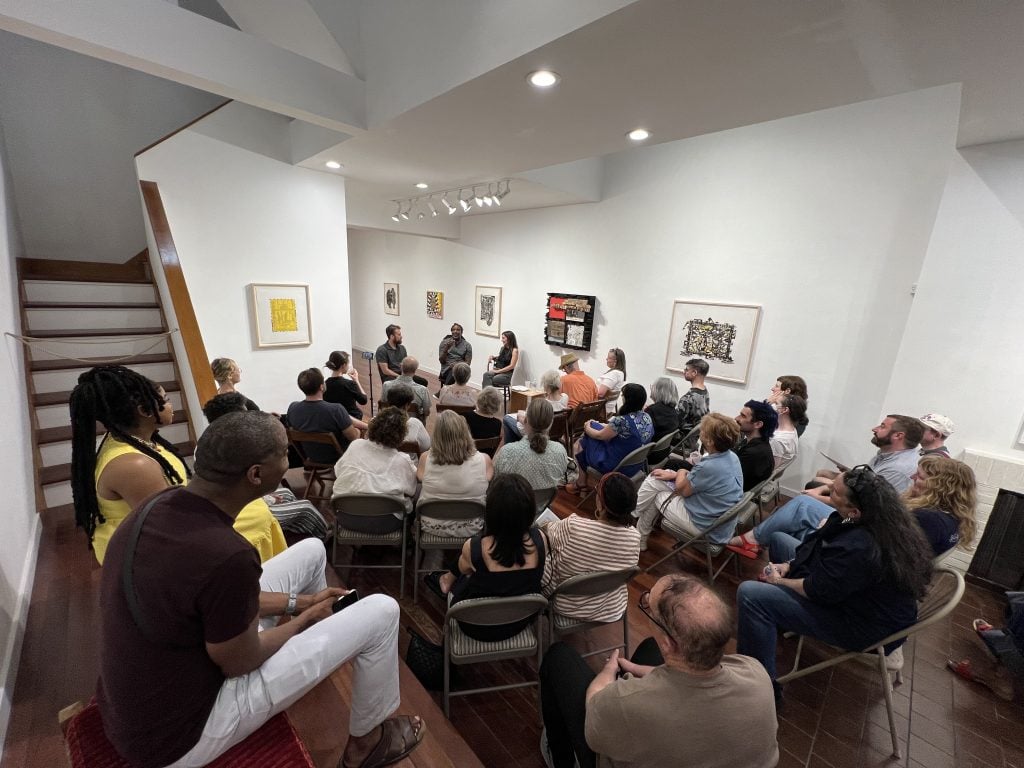
Conversation with Seph Rodney, Vlad Smolkin and Cara Ober on the exhibition “MATERIAL” (2024). Courtesy of CPM Gallery, Baltimore.
Find out more about the CPM Gallery here and follow us on Instagram.
Follow Artnet News on Facebook:
Want to stay up to date in the art world? Subscribe to our newsletter and receive breaking news, insightful interviews and astute critical views that drive the discussion forward.

